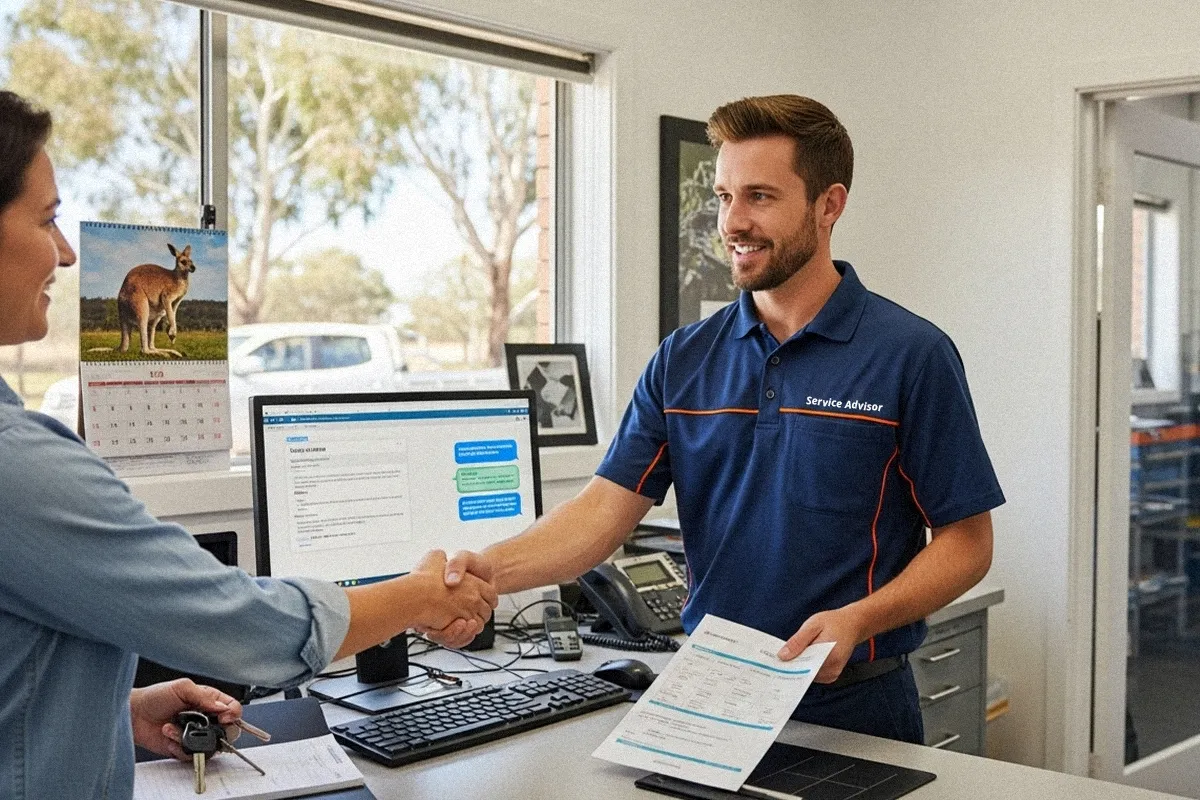
How Service Advisors Build Trust with Customers (And Why You Don’t Have to Do It All Yourself)
Every workshop owner dreams of a loyal customer base, people who trust your advice, approve necessary repairs without a second thought, and keep coming back year after year. But building that kind of trust isn't just about fixing cars well; it's about consistent communication, transparency, and making customers feel valued.
The challenge? Most workshop owners and their in-house teams are already stretched thin. You're juggling tools, answering phones, chasing parts, and trying to keep the bays full. So, how do you deliver that gold-standard, trust-building experience for every customer without burning yourself or your staff out? Let's dive in.
Why Trust is the Real Currency in Automotive Repair
Think about it: when a customer walks into your workshop, they're often feeling vulnerable. They might not understand what's wrong with their car, they might have had a bad experience elsewhere, or they could be worried about the cost. In this scenario, trust isn't just a nice-to-have; it's everything.
When customers trust you, they:
Approve repairs faster: They understand the "why" behind the work and feel confident in your recommendations.
Become repeat customers: They know they'll be looked after, so they don't shop around.
Refer their friends and family: Word-of-mouth is the most powerful marketing you can get.
Imagine a customer who's been burned by a mechanic before. They walk in guarded, skeptical. A service advisor's job isn't just to book their car in; it's to disarm that skepticism, build rapport, and show them they're in safe hands.
How In-Person Service Advisors Build Trust
Traditionally, an in-house service advisor is the frontline for building this trust. They do it through:
Personal Connection: Greeting customers by name, remembering details from past visits, and genuinely listening to their concerns. This makes customers feel seen and heard, not just like another job number.
Consistent Updates: Keeping customers in the loop throughout the repair process. This means proactive calls or texts about progress, unexpected issues, or when the car will be ready. No one likes being left in the dark.
Clear Explanations: Translating complex mechanical issues into plain English. A good service advisor doesn't just tell a customer what's wrong; they explain why it's important to fix it, often using visual aids like worn parts.
Follow-Through: Ensuring that promises are kept, whether it's a pick-up time or a specific repair. And after the job, a quick follow-up call or message to check in and ask for feedback shows you care beyond the transaction.
Proactive Planning: Suggesting future maintenance based on the vehicle's history or logbook, showing you're looking out for their long-term safety and budget.
The Overwhelm: Why It’s Hard to Do This Consistently
This all sounds great, right? But here's the reality for many workshops: the person at the front desk (often the owner or a technician) is juggling a dozen things at once.
The phone is ringing off the hook.
A customer just walked in with an urgent issue.
A technician needs a part ordered now.
You're trying to get an invoice out before the customer walks through the door.
When you're stretched this thin, what's the first thing that gets rushed or skipped? Often, it's those crucial trust-building steps: the detailed explanation, the mid-repair update, or the post-service follow-up. Customers end up feeling like a number, communication breaks down, and that hard-earned trust starts to erode. You're working harder, but the customer experience (and your bottom line) suffers.

How a VSA Builds Trust (Without the Overwhelm)
This is where a Virtual Service Advisor (VSA) becomes your "magic pill." A VSA handles all the communication and administrative tasks remotely, allowing your in-house team to focus on the tools and the direct customer interaction they excel at.
Here’s how a VSA builds trust, consistently and effectively:
Always-On Communication: VSAs are dedicated to communication. They can send pre-arrival messages, provide real-time updates during the repair, and follow up after the service. Customers get fast, consistent responses, making them feel valued and informed, even when your workshop is flat out.
Structured Explanations: VSAs use clear scripts and digital tools (like photos and videos from Digital Vehicle Inspections) to explain repairs. This transparency helps customers understand the work needed, leading to quicker approvals and greater confidence.
Proactive Follow-Ups: They ensure every customer receives a thank-you message and a request for feedback after their visit. They also track previously declined work and upcoming service items, sending timely reminders that show you're looking out for their vehicle's long-term health.
Consistency is Key: Because VSAs follow structured processes and aren't distracted by the chaos of the front desk, every customer gets the same high-quality, trust-building experience, every single time.
Side-by-Side: In-House vs. VSA vs. DIY/Owner
Let's look at how these trust-building tasks play out in different workshop setups:
The Magic Pill: Let a VSA Build Trust for You
You don't have to do it all yourself. Trying to manage every aspect of trust-building while also running a busy workshop is a recipe for burnout and missed opportunities.
A VSA gives every customer the attention and consistent communication they deserve, without adding to your in-house team's workload. They ensure that promises are kept, updates are sent, and customers feel informed and valued, all while you focus on what you do best: fixing cars and growing your business. It's the "magic pill" that solves the communication headache and lets you finally breathe.
Ready to deliver a trust-building experience for every customer, without burning yourself or your team out?
Book a free session with us at Workwise Auto Solutions. We’ll show you how a VSA can handle the trust-building, streamline your workflow, and keep your customers coming back.
